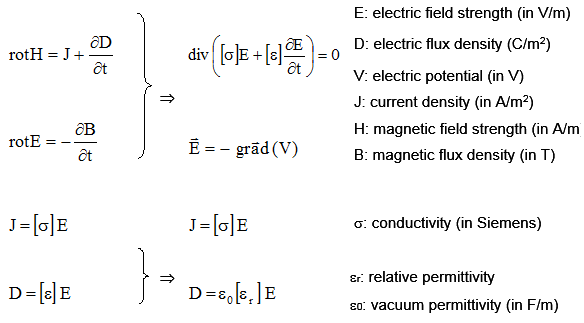Transient Electric: solved equations
Introduction
In a Transient Electric application the equations used for computation are:
- the corresponding Maxwell's equations for an electrical system, and
- the constitutive equation that characterizes the dielectric materials
The conditions of computation of a Transient Electric application are the following:
- the study is time depend: d/dt ≠ 0
the computation concerns the D and E fields; the B and H fields are not computed. The equations of the electric fields E, D and of the magnetic fields B, H are decoupled.
Equations and conditions
In the previously defined conditions of computation, the equations are summarized as follows:

Reminder about the differential operators:The curl divergence of a field is always null: [div rot (Field)] = 0.
Solved equation
The equation solved by the finite elements method in Flux in case of a Transient Electric application is the following:

where:
- σ is the tensor of the conductivity of the medium (in Siemens),
- εr is the tensor of the relative permittivity of dielectric materials
- ε0 is the vacuum permittivity; ε0 = 1/(36 π 109) (in F/m)
- V is the electric potential (in V)
State variable
The state variable in a Transient Electric application is the electric potential V (written Ve in Flux 3D).
The uniqueness condition of the electric potential V requires that the value of this potential at least in a point of the computation domain be known.